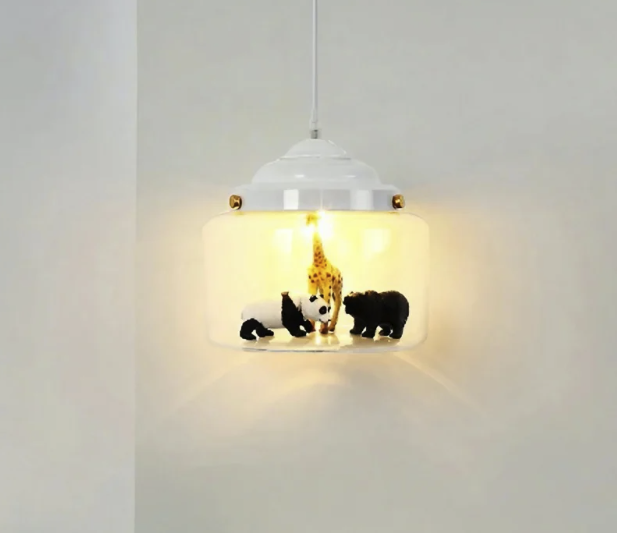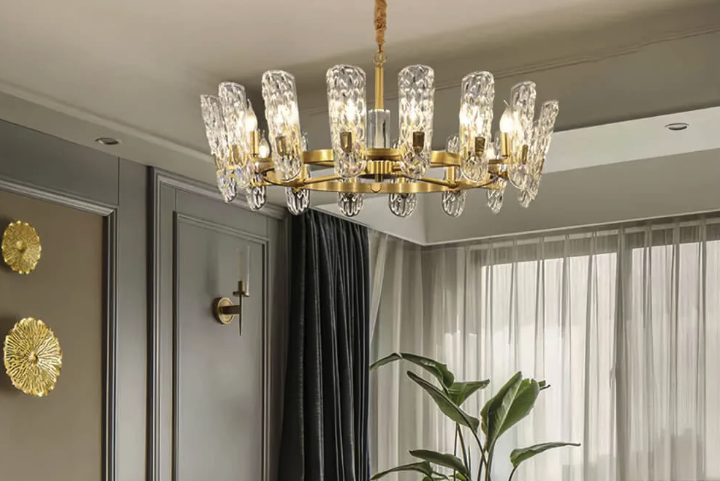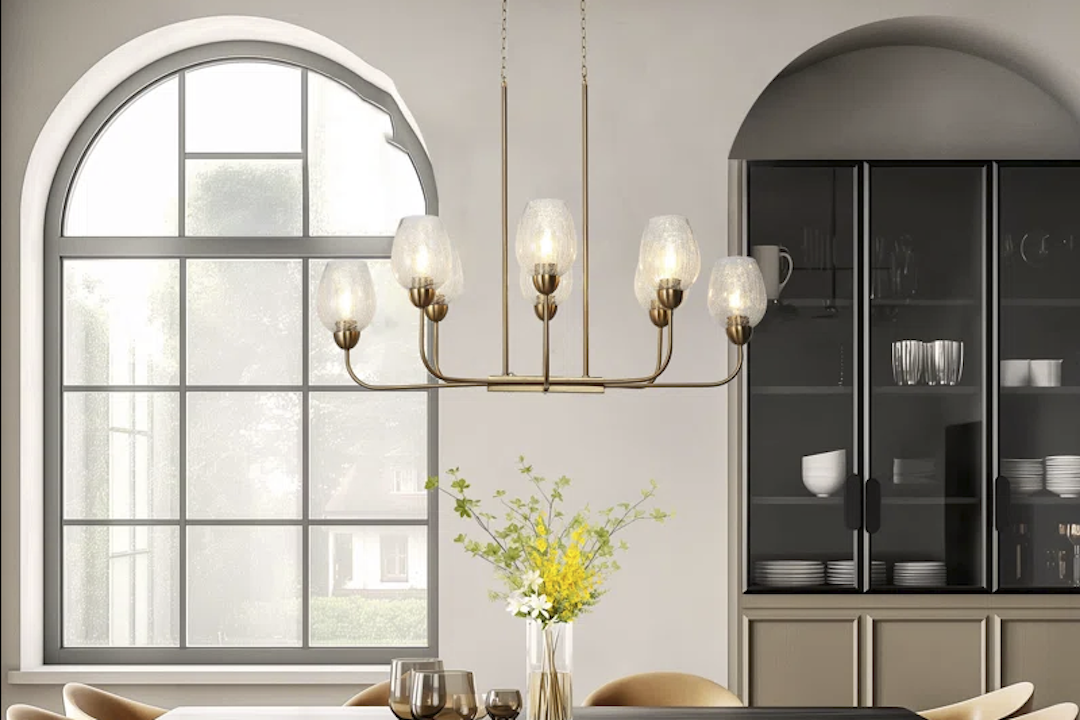The history of French chandeliers is a fascinating journey that intertwines art, culture, and craftsmanship. Originating in the medieval period, chandeliers were initially simple wooden frames adorned with candles. These early designs were functional, serving to illuminate large spaces in castles and churches.
As the Renaissance blossomed in the 16th century, the chandelier evolved into a more ornate fixture, reflecting the opulence of the time. The introduction of glass and crystal elements marked a significant turning point; artisans began to incorporate these materials to enhance the beauty and luminosity of their creations. The famed Baccarat crystal company, established in 1764, became synonymous with luxury and quality, producing exquisite chandeliers that adorned the palaces of Europe.
By the 18th century, French chandeliers Simig had reached new heights of sophistication. The Rococo style, characterized by its intricate designs and playful motifs, influenced chandelier aesthetics significantly. These fixtures became symbols of wealth and status, often found in the grand salons of aristocratic homes.
The use of cut glass and crystal not only added brilliance but also allowed for the refracting of light in mesmerizing patterns. The Palace of Versailles is a prime example of this grandeur; its Hall of Mirrors features stunning chandeliers that exemplify the height of French craftsmanship. As the Industrial Revolution progressed, mass production techniques emerged, making these luxurious items more accessible to the burgeoning middle class while still retaining an air of elegance.
Choosing the Perfect French Chandelier for Your Living Room
Assessing the Room’s Dimensions
The first step is to assess the dimensions of your space. A chandelier that is too large can overwhelm a room, while one that is too small may get lost among other furnishings. A general rule of thumb is to add the length and width of the room in feet; this total in inches will give you a good estimate of the chandelier’s diameter. For instance, if your living room measures 15 feet by 20 feet, a chandelier with a diameter of approximately 35 inches would be appropriate.
Choosing the Right Style
Style is another crucial aspect to consider when choosing a chandelier. French chandeliers come in a variety of designs, from the ornate Baroque style to the more minimalist Louis XVI aesthetic. If your living room features traditional decor with rich fabrics and antique furniture, a grand crystal chandelier with intricate detailing may be the perfect fit. Conversely, if your space leans towards modern or contemporary design, you might opt for a sleek metal fixture with clean lines that still pays homage to French elegance without overwhelming the room’s aesthetic.
Considering the Color Palette
Additionally, consider the color palette of your living room; a chandelier with warm tones can create a cozy atmosphere, while cooler hues can lend a more sophisticated air.
How to Incorporate a French Chandelier into Your Living Room Decor
Incorporating a French chandelier into your living room decor requires thoughtful placement and complementary design elements. The chandelier should serve as a focal point, drawing the eye upward and enhancing the overall aesthetic of the space. One effective approach is to hang the chandelier above a central seating area, such as a coffee table or an elegant sofa arrangement.
This positioning not only provides functional lighting but also creates an inviting atmosphere for gatherings and conversations. To further integrate the chandelier into your decor, consider coordinating it with other elements in the room. For instance, if your chandelier features crystal accents, you might incorporate similar materials in decorative accessories such as vases or candle holders.
Fabrics also play a significant role; drapes or upholstery that echo the colors or textures found in the chandelier can create a harmonious look. Additionally, wall art or mirrors can enhance the chandelier’s brilliance by reflecting light and adding depth to the space. A well-placed mirror opposite the chandelier can amplify its glow, creating an enchanting ambiance that transforms your living room into a luxurious retreat.
Maintenance and Care for Your French Chandelier
Maintaining a French chandelier is essential to preserving its beauty and functionality over time. Regular cleaning is crucial, as dust and grime can accumulate on both the fixture and its crystals, dulling their shine. To clean your chandelier effectively, start by turning off the power and allowing it to cool down if it has been recently used.
Use a soft cloth or feather duster to gently remove dust from the arms and base. For crystal components, a mixture of warm water and mild dish soap can be used; however, it’s important to avoid harsh chemicals that could damage delicate surfaces. When cleaning crystals, it’s advisable to remove them from the chandelier if possible.
This allows for thorough cleaning without risking damage to the fixture itself. After washing each crystal piece, dry them carefully with a soft cloth to prevent water spots from forming. Additionally, check for any loose connections or damaged parts during maintenance; tightening screws or replacing broken crystals can help maintain both safety and aesthetics.
Regular inspections every few months will ensure that your chandelier remains in pristine condition for years to come.
Enhancing the Glamour of Your Living Room with a French Chandelier
A French chandelier has an innate ability to elevate the glamour quotient of any living room. Its presence can transform an ordinary space into one that exudes sophistication and charm. To maximize this effect, consider layering your lighting scheme.
In addition to your chandelier, incorporate other light sources such as floor lamps or wall sconces that complement its style. This layered approach not only enhances functionality but also creates an inviting atmosphere that adapts to different moods and occasions. Another way to enhance glamour is through color coordination and texture play within your living room decor.
Rich fabrics like velvet or silk can add depth and luxury when paired with a sparkling chandelier. Consider using throw pillows or an area rug that echoes the colors found in your chandelier’s design; this creates visual cohesion throughout the space. Additionally, incorporating metallic accents—such as gold or silver frames for artwork—can further amplify the opulence associated with French chandeliers.
By thoughtfully curating these elements, you can create an environment that feels both luxurious and welcoming.
Where to Find the Best French Chandeliers for Your Living Room
Uncovering Unique Pieces with Historical Significance
Antique shops and estate sales are excellent places to discover one-of-a-kind French chandeliers with historical significance. These venues often carry chandeliers that have been lovingly restored or preserved over time. Shopping at these locations not only allows you to find unique items but also provides an opportunity to learn about their provenance from knowledgeable sellers.
Exploring Contemporary Designs and Reproductions
For those seeking contemporary designs or reproductions of classic styles, online retailers offer an extensive selection of French chandeliers. Websites like Wayfair or Overstock feature numerous options across different price ranges, making it easier to find something that fits both your budget and aesthetic preferences. Additionally, specialized lighting stores often carry curated collections of French chandeliers from renowned manufacturers such as Baccarat or Lalique.
Expert Guidance for an Informed Decision
Visiting these stores allows you to see fixtures in person and consult with experts who can guide you in making an informed decision based on your specific needs and style preferences. In conclusion, whether you are drawn to the historical significance of French chandeliers or their ability to enhance modern decor, these exquisite fixtures remain timeless symbols of elegance and sophistication in any living space.



